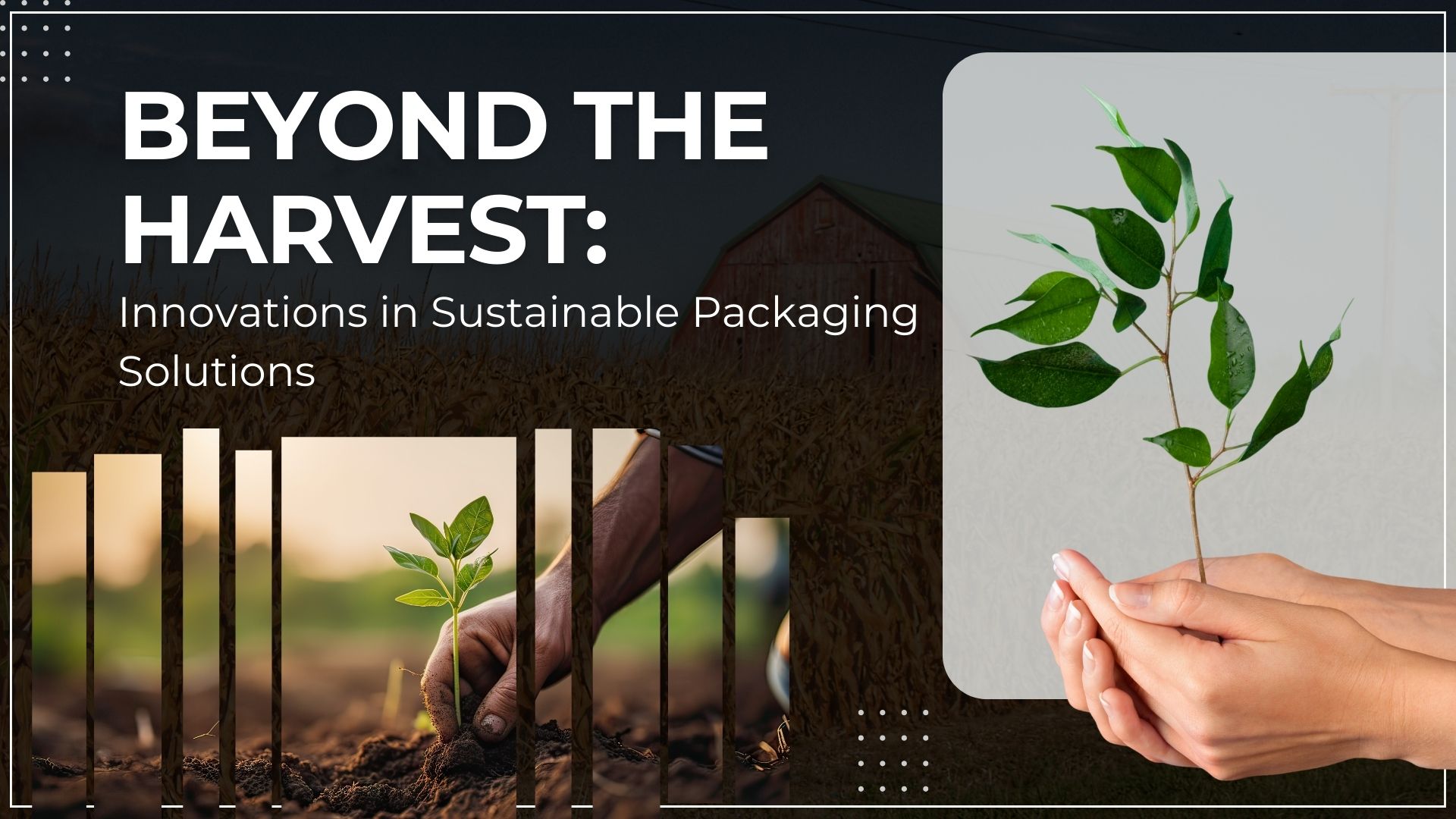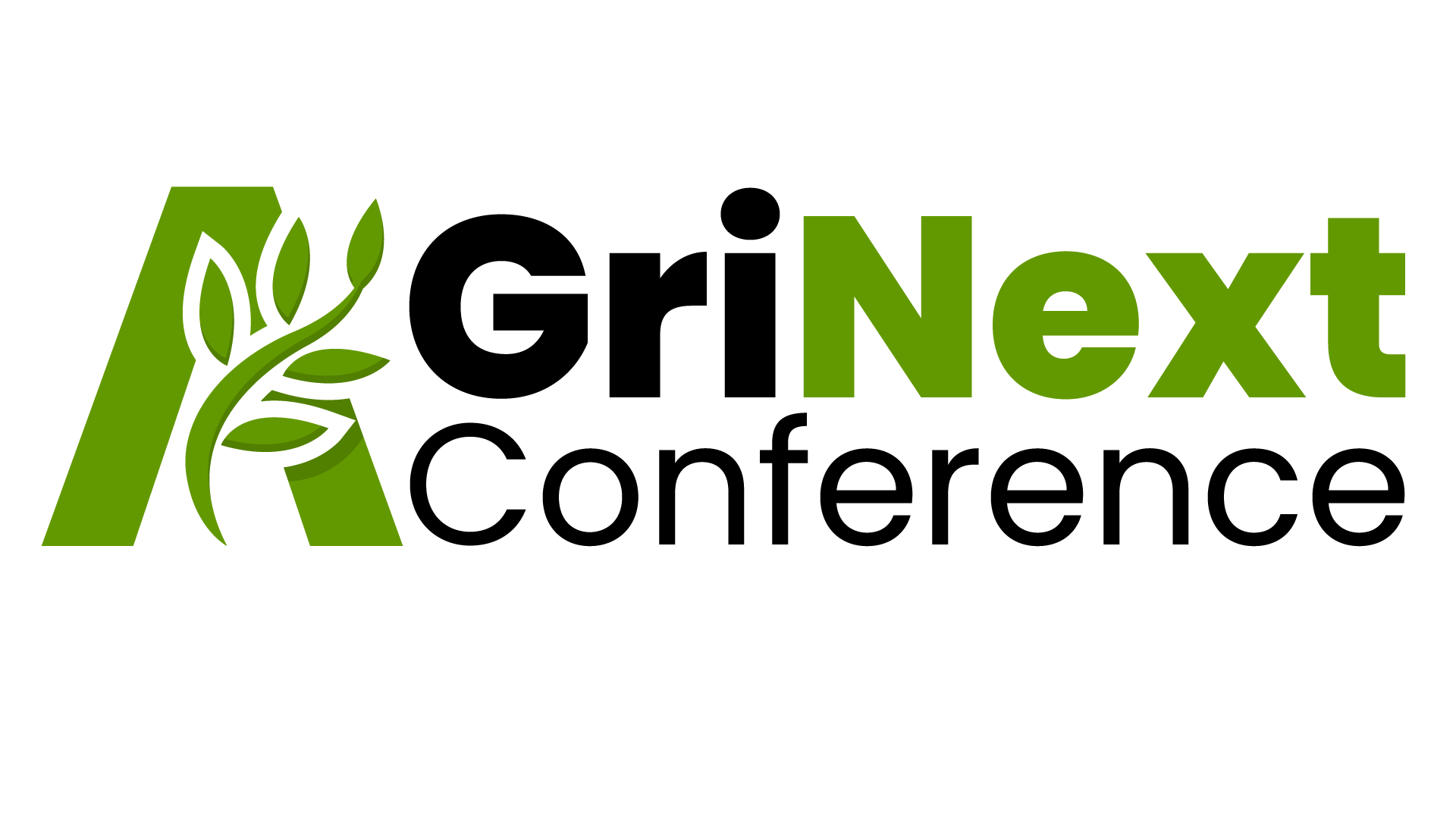
The global agricultural sector is increasingly recognizing the importance of sustainability beyond the harvest. As concerns about environmental impact grow, innovative sustainable packaging solutions are becoming essential. These solutions aim to reduce waste, conserve resources, and minimize carbon footprints, offering a greener alternative to traditional packaging methods. This blog explores several groundbreaking innovations in sustainable packaging within the agricultural industry, highlighting their benefits and challenges.
Table of Contents

What is Sustainable Packaging?
Sustainable packaging is more than just using eco-friendly boxes and recycling. It encompasses the entire life cycle of a package, from sourcing materials to disposing of them. Sustainability is about closing the loop and creating a circular economy—one where materials aren’t used once and thrown away, but renewed and repurposed.The Sustainable Packaging Coalition outlines several criteria to consider when making sustainable packaging. Evaluate whether it is beneficial, safe, and healthy for individuals and communities throughout its life cycle. Sustainable packaging should not harm people or the environment at any stage, from production to disposal.
Meets market criteria for cost and performance:
It should be economically viable and functionally effective, ensuring that it protects and preserves its contents adequately. It is sourced, manufactured, transported, and recycled using renewable energy: The entire process should rely on renewable energy sources, minimizing the carbon footprint. Optimizes use of renewable and recycled materials. Preference is given to materials that are renewable or have been recycled, reducing dependence on virgin resources. It Is manufactured using clean production technologies and best practices:
The production processes should minimize environmental impact through efficient and clean technologies.
Optimizes Materials and Energy Through Design:
Efficient design reduces waste and conserves resources, ensuring minimal use of materials and energy. It is recoverable and usable in closed-loop (reusable) cycles. The packaging should be designed for reuse and recycling, facilitating a closed-loop system where materials are continuously repurposed. Sustainable packaging aims to integrate these criteria to create packaging solutions that support environmental health, economic viability, and societal well-being throughout their life cycle.
Biodegradable and Compostable Packaging
One of the most significant advancements in sustainable packaging is the development of biodegradable and compostable materials. These materials break down naturally, reducing the environmental burden of plastic waste. Common materials include:
PLA (Polylactic Acid):
Derived from renewable resources like corn starch or sugarcane, PLA is used for a variety of packaging applications. It decomposes under industrial composting conditions, offering a viable alternative to petroleum-based plastics.
PHA (Polyhydroxyalkanoates):
Produced by microbial fermentation of sugar or lipids, PHAs are fully biodegradable and compostable. They are suitable for a wide range of packaging types, from films to rigid containers.
Starch-Based Plastics:
These materials blend starch with other biodegradable polymers, providing a flexible and compostable packaging option. They are particularly useful for packaging perishable goods.
Edible Packaging:
Edible packaging is an innovative approach that eliminates waste entirely by making the packaging consumable. Some notable examples include:
Seaweed-Based Packaging:
Companies are developing packaging made from seaweed extracts, which are not only edible but also rich in nutrients. These materials can be used for wrapping food products and are entirely biodegradable if not consumed.
Milk Protein Films:
Derived from casein, a protein found in milk, these films are edible and offer excellent barrier properties against oxygen, thus extending the shelf life of food products.
Fruit and Vegetable Peels:
Research is exploring the use of peels from fruits and vegetables, such as oranges and bananas, to create edible packaging films. These films can provide an eco-friendly alternative to synthetic materials.
Reusable and Refillable Packaging
Promoting a circular economy, reusable and refillable packaging solutions are designed to be used multiple times, reducing the need for single-use plastics. Examples include:
Glass and Metal Containers:
These materials are durable and can be sanitized and reused multiple times. They are ideal for packaging products like dairy, beverages, and bulk foods.
Silicone Pouches and Bags:
Flexible and durable, silicone packaging can be used repeatedly, making it a practical solution for reducing single-use plastic waste.
Returnable Packaging Systems:
Companies are developing systems where consumers return empty packaging for cleaning and refilling. This model is gaining popularity in the beverage and personal care industries.
Innovations in Material Science
Advancements in material science are driving the development of new sustainable packaging materials. These include:
Nanocellulose:
Derived from plant fibers, nanocellulose is a lightweight, strong, and biodegradable material. It can be used to create packaging films and coatings with excellent barrier properties
Algae-based Materials:
Algae can be processed into biodegradable packaging materials. These materials are not only eco-friendly but also contribute to carbon sequestration during their growth phase.
Innovations in Packaging
Innovations in packaging are transforming the way we think about sustainability and waste reduction. Here are three noteworthy examples:
Thinning Down Plastic Bottles Lush
Lush’s innovative packaging strategies demonstrate a significant advancement in reducing plastic waste. The company offers “naked” products, which are completely package-free, for 35% of their product range. This approach has saved 124 million plastic bottles since 2005. For necessary packaging, Lush uses 100% post-consumer recycled plastic and has made their plastic bottles 10% thinner since 2012, saving thousands of pounds of plastic annually. Additionally, Lush encourages customers to return empty packages through loyalty programs, promoting a circular economy.
Mushroom-Based Packaging for Consumer Electronics (Dell)
Dell packaging is at the forefront of sustainable packaging with its adoption of mushroom-based packaging. Developed by Evocative Design, this innovative material uses mycelium (the root structure of mushrooms) combined with agricultural waste to create a biodegradable alternative to polystyrene. This packaging is more flexible, sturdier, and completely biodegradable, representing a significant improvement over traditional packaging materials. Dell’s use of this technology underscores its commitment to pushing industry sustainability standards forward.
Eliminating Six-Pack Rings (Carlsberg)
Carlsberg has revolutionized beverage packaging with its “Snap Pack,” which eliminates the need for plastic six-pack rings. Instead, the company uses a special glue to hold cans together, reducing plastic use by 76% and saving 1,200 tons of plastic annually. This innovative approach addresses the environmental issues associated with degradable six-pack rings, which can break down into harmful microplastics. Carlsberg’s solution not only reduces plastic waste but also maintains the recyclability of the cans.
Coca-Cola’s BYOB Water Stations
Coca-Cola’s latest packaging innovation encourages consumers to bring their own bottles to DASANI PureFill stations. This initiative aims to remove 1 billion polyethylene terephthalate (PET) plastic bottles from its supply chain, reflecting a significant step towards reducing plastic waste.
These examples illustrate how companies are innovating in packaging to reduce environmental impact, promote sustainability, and support a circular economy.
Challenges and Future Directions
While sustainable packaging innovations offer significant environmental benefits, several challenges need to be addressed:
Cost: Many sustainable materials are currently more expensive to produce than traditional plastics. Scaling up production and improving manufacturing processes can help reduce costs.
Infrastructure: Effective composting and recycling infrastructure is essential to ensure that biodegradable and recyclable packaging materials are properly processed.
Consumer Acceptance: Educating consumers about the benefits and proper disposal methods of sustainable packaging is crucial for widespread adoption.
Regulatory Support: Governments and regulatory bodies need to support sustainable packaging initiatives through policies and incentives.
Conclusion
Innovations in sustainable packaging solutions are transforming the agricultural industry, offering eco-friendly alternatives to traditional materials. Biodegradable and compostable packaging, edible packaging, reusable systems, and advancements in material science are paving the way for a greener future. Addressing challenges such as cost, infrastructure, consumer acceptance, and regulatory support will be key to the widespread adoption of these sustainable solutions. As the industry continues to innovate, sustainable packaging will play a vital role in reducing the environmental impact of agriculture, ensuring a more sustainable future beyond the harvest.
The AgriNext Awards, Conference, and Expo, organized by Next Business Media, and Internet Shine ,is an annual premier event set to take place in Dubai on November 13&14, 2024 This event serves the global agriculture and agribusiness community, offering a unique platform for collaboration and knowledge exchange.Utilizing Dubai’s strategic location and status as a global hub, AgriNext Dubai provides insightful keynote speeches, interactive workshops, and a comprehensive expo. The event highlights cutting-edge agricultural innovations and fosters strategic partnerships, aiming to drive the future of agriculture forward.
Signup For AgriNext Conference Newsletter


